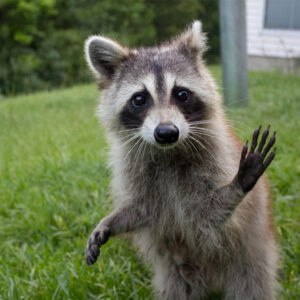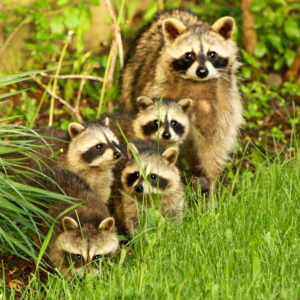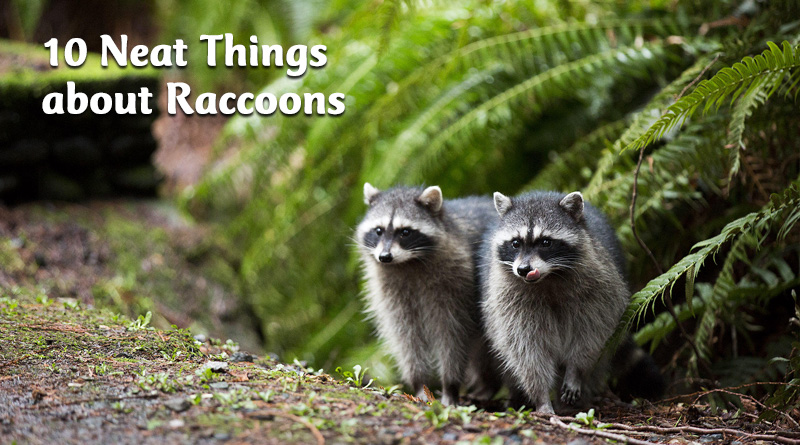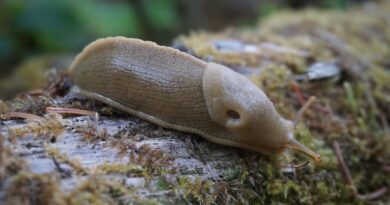About Raccoons
1. Smart cookies.
 Raccoons are highly intelligent with excellent memories. One study showed that they could remember very well for at least three years. It could be more, but who would know? Although they can live for up to 20 years in captivity, we are told that the average lifespan in the wild is only two to three years.
Raccoons are highly intelligent with excellent memories. One study showed that they could remember very well for at least three years. It could be more, but who would know? Although they can live for up to 20 years in captivity, we are told that the average lifespan in the wild is only two to three years.
2. Can raccoons count?
Raccoons, who love grapes, are able to distinguish between boxes holding various quantities of the fruit, choosing the box holding four grapes over the one holding only two or three.
3. Oh, those hands.
 Raccoons have opposable thumbs, just as humans do. This makes them seriously dexterous. Their paws are very sensitive and they can manipulate all sorts of man-made objects, including door knobs and locks.
Raccoons have opposable thumbs, just as humans do. This makes them seriously dexterous. Their paws are very sensitive and they can manipulate all sorts of man-made objects, including door knobs and locks.
4. Oh, those feet!
Their hind feet can actually rotate, allowing raccoons to travel headfirst down a tree, wearing their feet on backwards as they descend.
5. Serious bandits.
Raccoons not only look like bandits, they can act like them. In another study, raccoons would open complex locks within the first 10 tries and then could replicate the feat even when the locks were scrambled or rearranged.
6. The better to hear you with, my dear.

7. Let’s get together at the old latrine!
At one time, it was alleged that raccoons were fastidious animals that washed their food. Now that assumption is being shattered through closer observation. Although they do sometimes dip their food in water, it may be simply to make their paws more sensitive. Whatever. Apparently, what they actually do is share latrines, which then become party flags for nocturnal get togethers, where they eat, play and later sleep it off.
8. So, aren’t they solitary?
Here’s another former assumption that is under attack. While adults do tend to live alone, it is only for a short time between litters if they are female. However, often males will get together in groups of four to warn off foreign males at mating times and the females often meet to feed or rest.
9. The facts and only the facts.

10. What do raccoons eat?
Better question, what don’t they eat? In the wild, their diet consists of 40 per cent invertebrates (slugs, worms, grubs); 33 per cent plants (they love fruit, especially grapes); and 25 per cent vertebrates (fish, frogs, hatchlings and birds, other small mammals). They also like cat food, overripe bananas, cooked chicken, left over pizza and sardines. We have successfully used all of these to entice them into our traps. They have often, just as successfully, managed to grab the goodies and run without getting trapped.
–Dorothy Dobbie Copyright©
Pegasus Publications Inc




